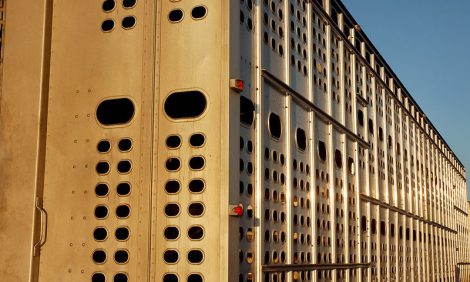



Growth in Cattle Weights Compensates Fall in US Herd Numbers
ANALYSIS - The drop in US beef production is not as deep as it might have been, despite the dramatic fall in the national beef herd numbers, writes Chris Harris.The US cattle numbers now stand at 87 million but they have dropped to 1950’s low levels from a high point in the mid-1970s and over 100 million in 1994, Prof Jeff Savell from Texas A&M University told the English Beef and Lamb Executive Processor Conference in Stratford upon Avon.
Prof Savell said that bigger cattle now in the US are helping the sector achieve a greater tonnage.
In 1991 carcase weights were around 759 lbs and by 2011 they had reached 825 lbs and today they are approaching 850 lbs.
This increase in weight, Prof Savell said, that had also meant that prime cuts such as the rib eye are also getting bigger – growing by about one square inch in the 20 years from 1991 to 2011 from 12.9 sq. ins to 13.8 sq. ins.
With the growth in carcase weight and the muscle area of some of the prime cuts, Prof Savell also questioned the eventual eating quality that such growth would bring.
However, he said that the main reason for the sharp drop in cattle numbers had been drought.
For Texas, the number one cattle producing state, the drought has had a severe effect on cattle numbers and the only way the herd will be rebuilt is if the pastures grow again and the rebuilding of the herd will take time.
In the second major cattle state in the US, Nebraska, the cattle numbers had grown because of irrigation projects and Texas had seen many of its cattle shipped to Nebraska Because of the drought.
In general more than half of the US production is centred on five states – Texas, Nebraska, Kansas, Oklahoma and California most of which had been hit by drought.
With the drought hitting Texas and California severely, the falloff in numbers has also seen processing plants close. The Cargill Meat Solutions plant in Plainview, Texas closed in February last year and National Beef’s Brawley plant in California is due to shut down in April this year.
Prof Savell said the plant closures have had a serious effect on the communities with 2,000 jobs going at the Plainview, Texas plant and a knock on effects of the closure of a cow processing plant nearby.
Prof Savell said that on top of the problems brought by the drought, the US beef sector has also been hit by new country of origin labelling regulations, which has stopped numbers of cattle coming across the borders for finishing from both Mexico and Canada.
“There will be more closures and we need to know where they will be. Everyone is scared,” Prof Savell said.
TheCattleSite News Desk


